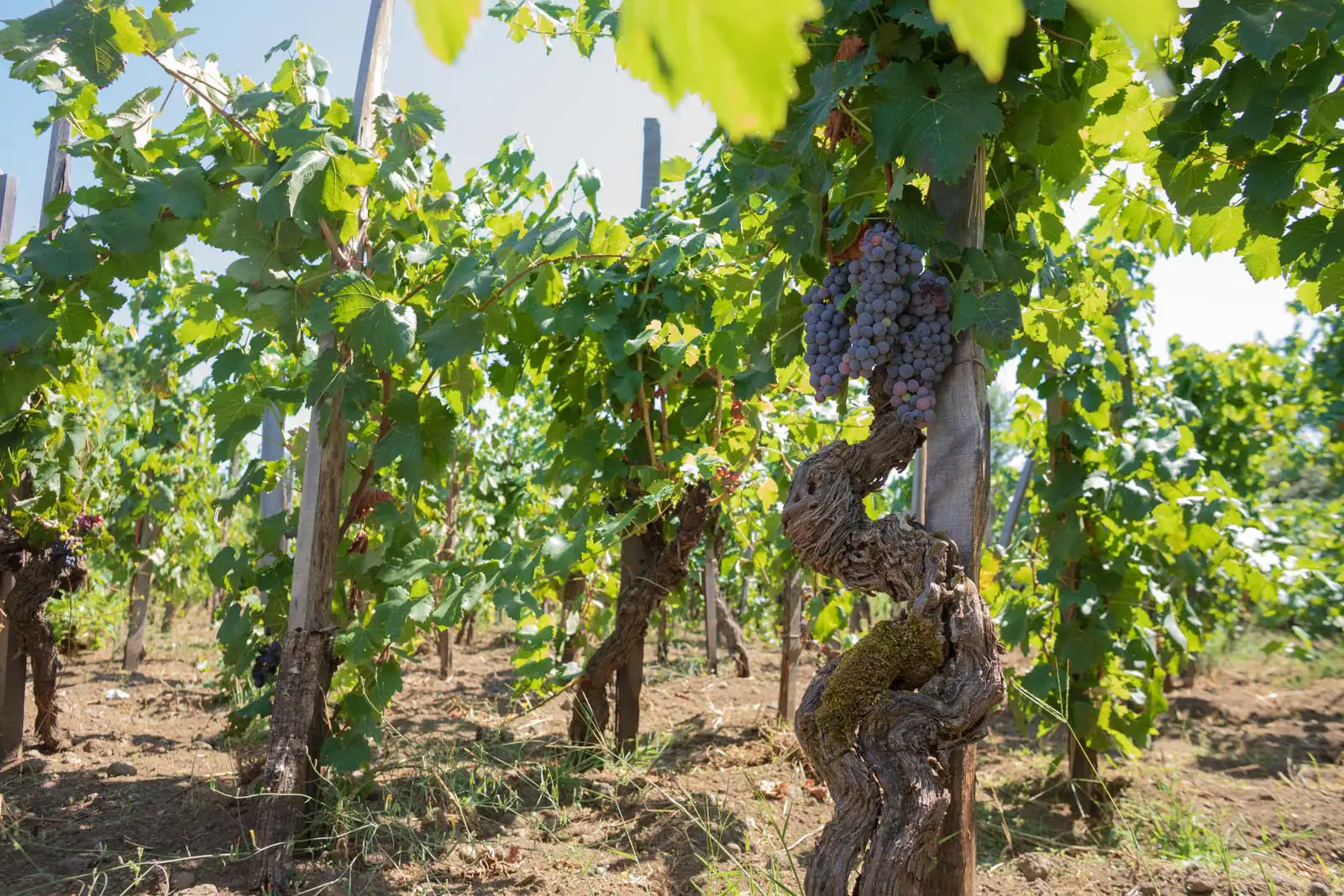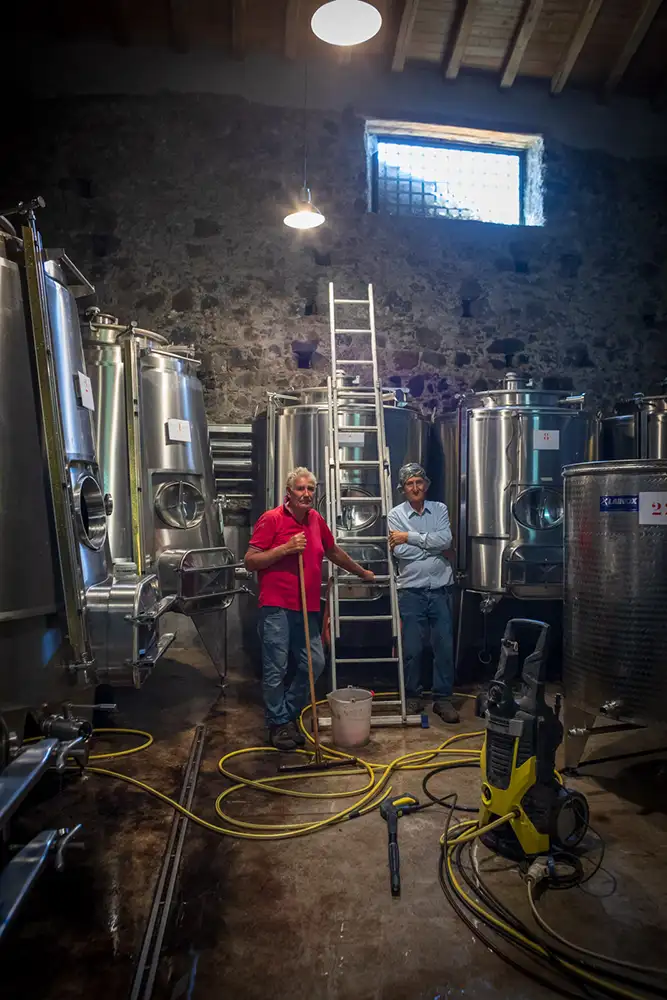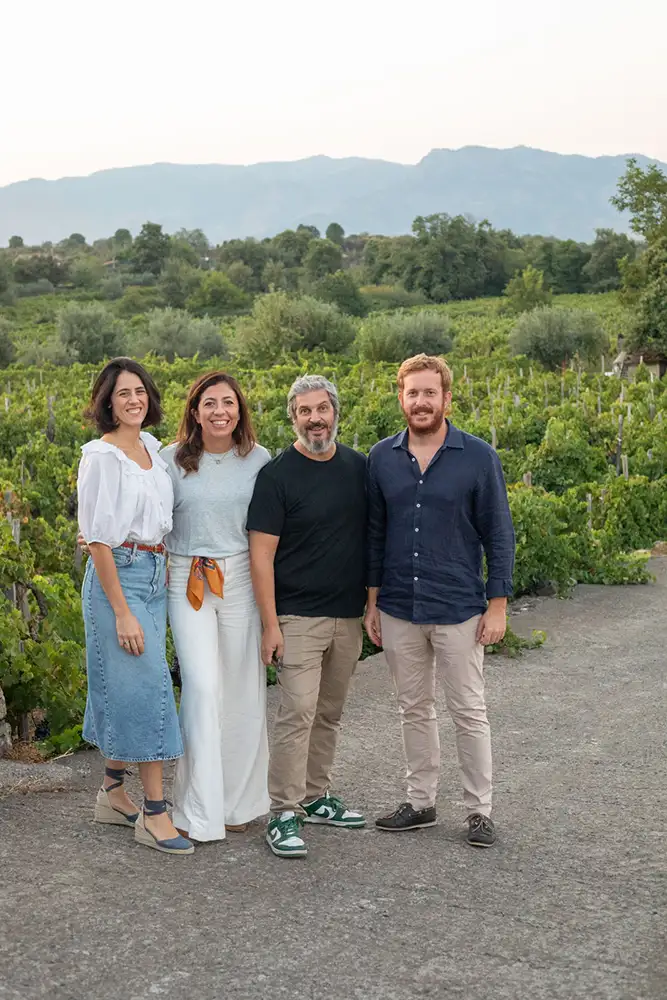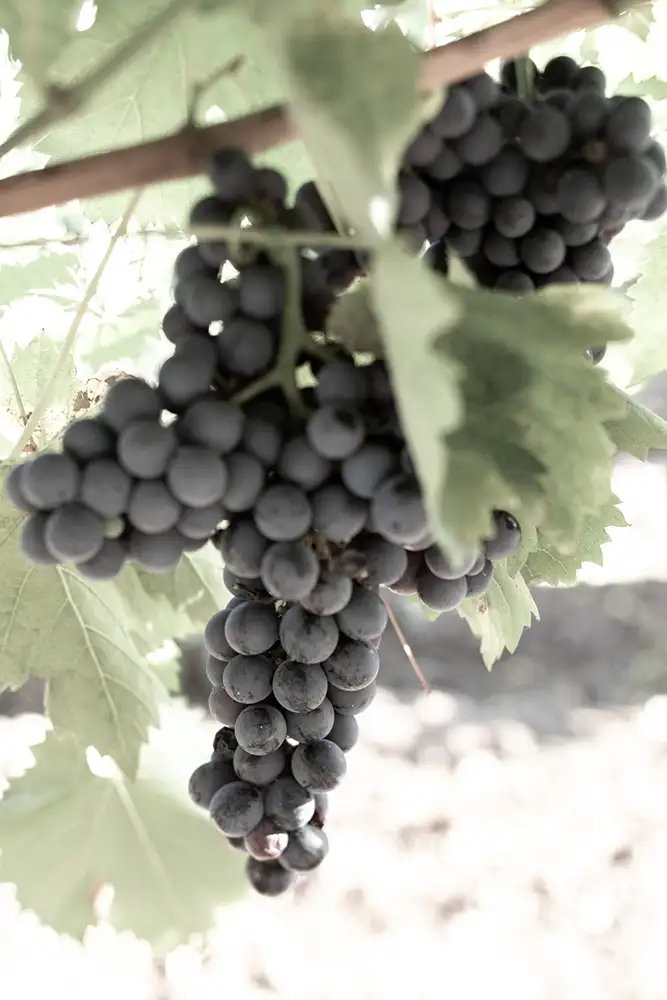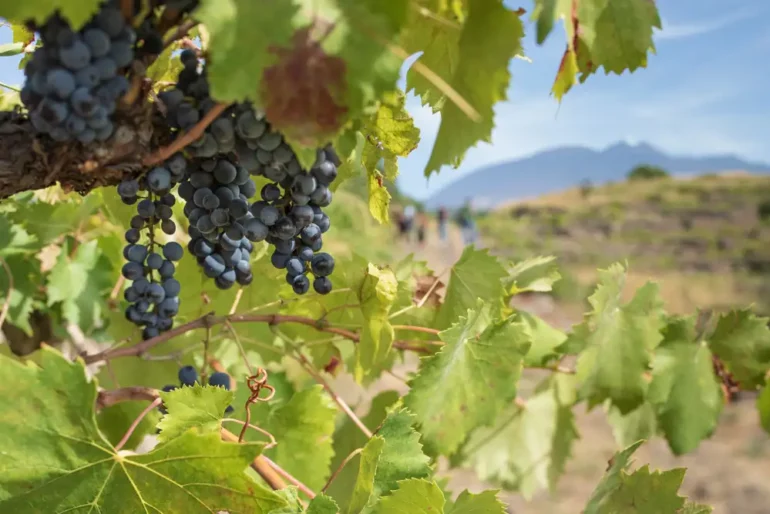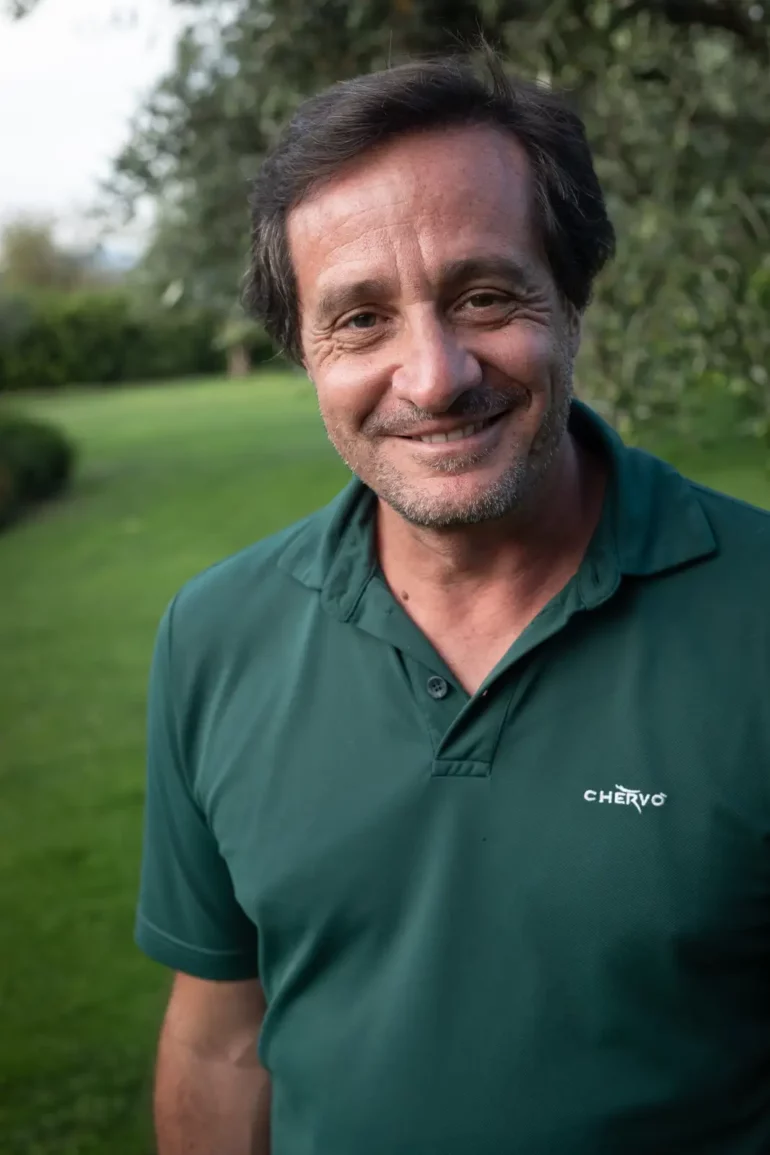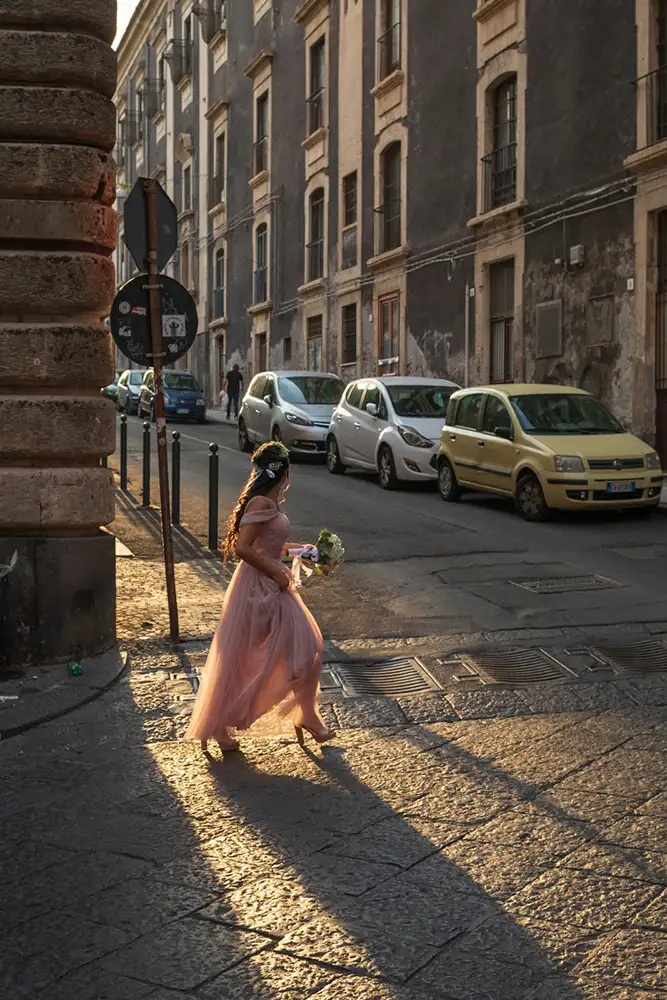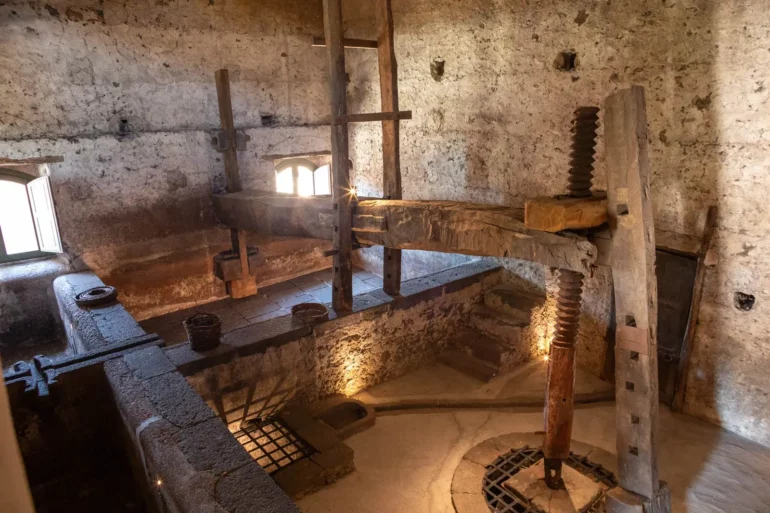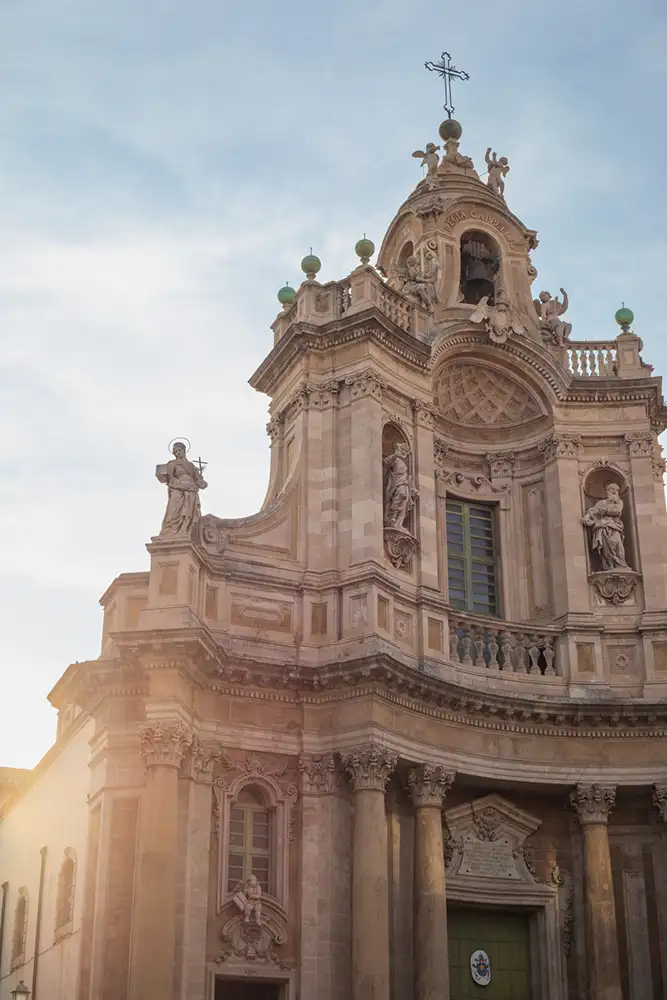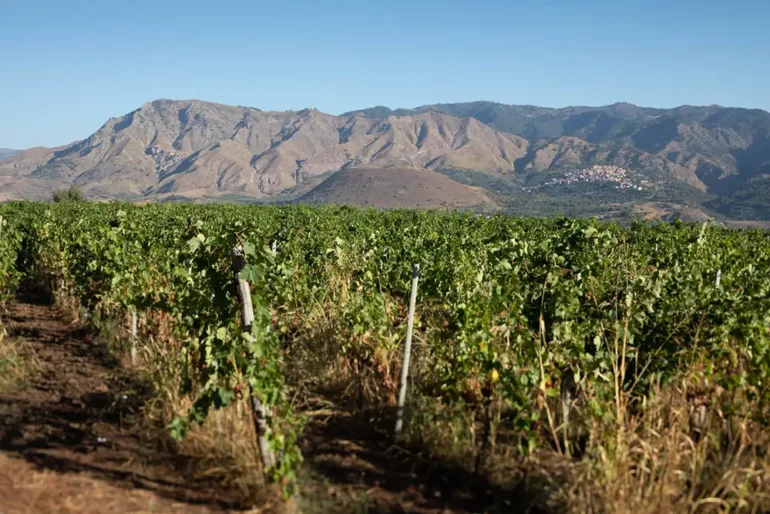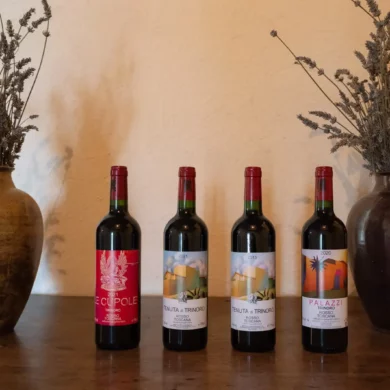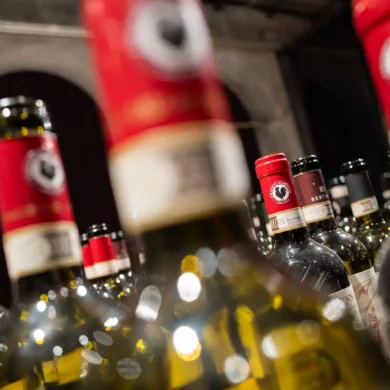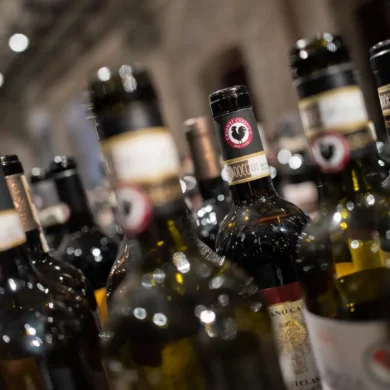During the long and protracted days of isolation during the COVID-19 pandemic, one wine region dominated my daydreams of future travel: Sicily’s Mount Etna. Terraced vineyards, lava flows, snow and ash, light and shadow — these were the images that colored my imagination as I sipped bottle after bottle of Etna Bianco and Etna Rosso wines.
This is easily the most intriguing wine zone in southern Italy, possibly in all of Italy, with enormous variety and increasingly high standards.
What started merely as an editorial endeavor (“Opening a Bottle is missing coverage of Etna. Let’s fix that,”) quickly became an obsession. Writing a First-Taste Guide to the region’s red wines (which I have since updated) hardly scratched the itch, and neither did the countless bottles my wife and I fawned over as 2020 became 2021 and even 2022. It was clear, I needed to go there to unearth deeper stories.
Last year proved to be my chance, as I landed an invitation to Etna Days, the DOC’s annual media event held every September.
Yes, this report is a long-time in the making, but what I left with from my time on the volcano is this: me and Etna are just getting started. That smoldering summit wants me to return, to linger longer, to get to know its community of winemakers and their dazzling array of wines even more. It certainly posed for the camera well (all of the photos in this piece are from my time there).
What’s New? The Etna DOCG is Coming
Members of the Etna DOC are currently in hot pursuit of DOCG designation for their wines, which they will certainly have no problem achieving. This is easily the most intriguing wine zone in southern Italy, possibly in all of Italy, with both enormous variety and increasingly high standards.
The former (variety) is a major asset, and the latter (high quality standards) cannot be underlined enough. Nerello Mascalese and Carricante have primacy on the red and white wines, respectively, and that should be the case. By they have a superb alchemy with other native varieties, and that diversity in the old-vine vineyards of Etna — as well as the hundreds of microclimates and varying ages of volcanic soil — is an essential part of the area’s identity. The DOCG process often calls for more stringent (that is, specific) regulations, and one hopes that any new parameters preserve this legacy of native grapes on Etna. With this group of producers, I am fairly confident that they won’t throw the baby out with the bathwater.
As for quality, I sampled well over 150 wines from 60+ wineries over four days on Etna, and there wasn’t a bad wine in the lot. The worst I could say of some of them was “technically fine, but forgettable,” but that would only pertain to less than 10% of the wine’s sampled. Etna’s wines have personality, and while Etna Bianco is certainly the hot commodity right now, Etna Rosso as a product has reached a compelling level of maturity. While we also have rosato and spumante wines to assess, it was the Etna Rosso wines that triggered the renaissance in the early 2000s, and they’ve been in fine form since. Now comes the fun part: parsing those eccentric details from producer to producer, and vintage to vintage.
What emerged for me were the following 13 Etna Rosso wines: a top 10 to seek out over the coming months, as well as 3 wines that were so appealing and compelling (but not yet imported into the United States) that I’m going to cover them anyway. Who knows: my editorial has resulted in more than one winery expanding their import presence in the U.S. Maybe it’ll happen again.
Navigate to Each Wine
- 2019 Azienda Agriocola Biondi “Cisterna Fuori” Etna Rosso
- 2021 Barone Villagrande Etna Rosso
- 2020 Casale 120 Contrada Picciolo Etna Rosso*
- 2021 I Custodi delle Vigne dell’Etna “Pistus” Etna Rosso
- 2019 Donnafugata Contrada Marchese Etna Rosso Riserva
- 2021 Fedegraziani “Profumo di Vulcano” Etna Rosso
- 2013 Feudo Cavaliere Millemetri Etna Rosso*
- 2019 Graci “Sopra il Pozzo” Arcuria Etna Rosso Riserva
- 2019 Monteleone “Qubba” Etna Rosso
- 2020 Tenute Bosco Rosso Riserva
- 2021 Tenuta di Fessina “Erse” Etna Rosso
- 2021 Tenute delle Terre Nere Dagala di Bocca d Orzo Etna Rosso
- 2019 Tenute Tozzi “I Turrizzi” Etna Rosso*
* Not presently imported into U.S.
Etna Rosso
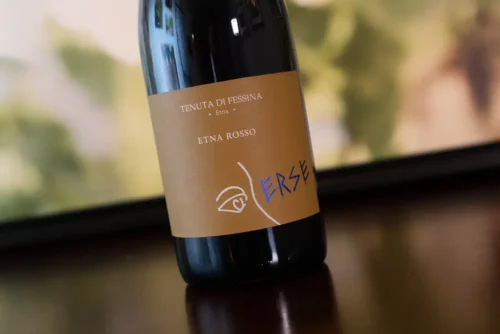
This section covers the entry-level wines that are either a blend of plots or the largest wine by volume for an estate. Translation: the most affordable.
Etna Rosso must be a minimum of 80% Nerello Mascalese and a maximum of 20% Nerello Cappuccio. Interestingly, up to 10% can be comprised of non-aromatic white grapes that have been sanctioned for the region, but you rarely encounter this.
2021 Tenuta di Fessina “Erse” Etna Rosso
On the north slope of Etna, in the one-street town of Rovitello, you’ll find this upper-echelon, certified-organic wine estate hidden away behind main street’s homes and a lonely railroad track. The estate vineyard (Il Musmeci) is unlike any I’ve seen. Gnarled 70- to 110-year-old vines aimlessly grow this way and that, sometimes leaning against dry-stone walls, other times sending desperate green tendrils over them like the outstretched arm of someone who fell overboard.
The ethos here is on merely nudging the wines in the right direction in the cellar. For this report, I am spotlighting Tenuta di Fessina’s 2021 “Erse” Etna Rosso (★★★★ 1/2) because it best represents a group of Etna Rosso wines that are no-questions-asked charming and approachable. This is a great gateway to Etna Rosso with heaps of red-fruit and mineral tones and small, gentle tannins to start your night. Tenuta di Fessina’s “A Puddara” Etna Bianco is one of the best white wines in all of Italy.
2021 Barone Villagrande Etna Rosso
So much of Etna’s modern wine story was written in the last 20 years. Barone Villagrande is an exception. For 300-plus years, the Nicolosi Asmundo family has been producing wine from vines on Etna in one way or another, and that legacy was solidified in 1968 when Crlo Nicolosi Asmundo drafted the disciplinare governing the Etna DOC. Among his contributions was the establishment of Milo as the sole cru allowed for the Etna Bianco Superiore designation.
I love this estate’s old-school approach, such as the use large chestnut barrels on their Etna Rosso, including the entry-level 2021 (★★★★ 3/4). Chestnut seems to trigger an aromatic openness in red wines that is quite different than oak (see also ARPEPE‘s Nebbiolo wines up north in Lombardy’s Valtellina), but I also love the fact that Barone Villagrande continues to source the chestnut from Etna’s slopes. Suggestive of black raspberry, petrichor and roasted nuts with a subtle herbaceous edge, this is an extraordinary wine for the price.
2021 I Custodi delle Vigne dell’Etna “Pistus” Etna Rosso
Of all the wineries in Italy, I Custodi delle Vigne dell’Etna has the weird dichotomy — more than anyone else — of being simultaneously reliable yet unpredictable. Mario Paoluzi presides over an company that lovingly restores, revitalizes and protects numerous old-vine plots on Etna’s north slope, and then shepherds them into compelling, complex and shape-shifting wines vintage after vintage. No other table at the Grand Tasting left me more thrilled and elated.
I am choosing the standard-bearer, the 2021 Pistus Etna Rosso (★★★★★) because it provides a valuable “not so fast” counterpoint to those who think Etna Rosso needs to be all about Nerello Mascalese. A full 20% of “Pistus” is Nerello Cappuccio, a difficult grape whose obstacles in the vineyard would make most winemakers throw their hands up in frustration. But not Paoluzi. Here, Nerello Cappuccio doesn’t so much soften as heighten the cherry-and-mint core of Nerello Mascalese’s iconic fruit flavor, while under the waves of acidity running through the mid-palate you get a sense for possibilities. Even young, this wine has perfect tannins.
Etna Rosso Contrada & Single-Vineyards
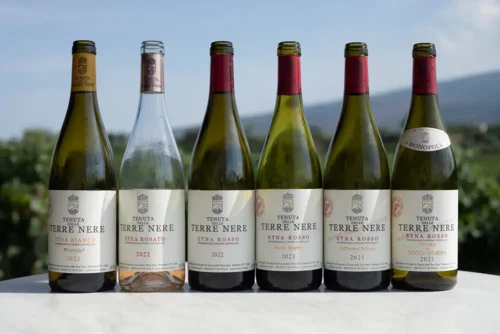
Below are wines sourced entirely from a single contrada and/or a single vineyard, of which there are many. Because Etna Rosso has so many terroir markers, this is often the best approach for showcasing the unique holdings a winery has.
The Etna DOC allows for a Riserva designation on the Etna Rosso if it has been aged four years at the winery within the zone (of which 12 months is in wood), if it has met yields of 8 tonnes/hectare, and if it achieves a minimum of 13% ABV (an easy threshold that most wines apply to anyway).
These wines are sorted from least to most expensive according to data found on wine-searcher.com.
2020 Tenute Bosco “Vigna Vico” Rosso Riserva (Prephylloxera)
On my second to last night in Sicily, I was pleased to be a guest at an incredible wine dinner at Tenuta di Fessina which featured Federico Graziani of Federgraziani, Tenuta di Fessina’s Jacopo Maniaci and winemaker Benedetto Alessandro, Giulia Monteleone of Monteleone (a joint partnership with her husband, Benedetto Alessandro), and Sofia Ponzini of Tenute Bosco.
The evening was the vinous highlight of the whole trip, with each winery pouring their poised, unique, character-driven wines, one after the next. Graziani roasted an enormous chicken for the whole group, and somewhere along the way there were volcano-shaped rice fritters. It was the kind of setting where wine is best enjoyed, and I loved seeing the clear camaraderie among the five producers.
Ponzini’s Tenute Bosco is yet another under-the-radar gem forged on the high slopes of Mount Etna. “There is a great tradition of women taking care of the vines on Etna,” Ponzini told the group, as she elaborated on the lips rising from the volcano on her label — a tribute to both these women, as well as the “feminine soul” of the mountain.
I deeply enjoyed her rosato and Etna Rosso, but found her “Vigna Vico” Etna Rosso (★★★★ 3/4) to be the headline-grabber. This wine is made from vines that predate the phylloxera plague of the late 1800s and early 1900s, something occasionally find on Etna. Enticing with its rainstorm minerality and leathery undertones, the wine’s energetic acidity and coarse-cotton tannins suggested that it would like to be put back in the bottle for a decade’s rest. Structured for the long haul and amazingly complex, it is certainly a wine worth seeking out.
2019 Monteleone “Qubba” Etna Rosso
The husband-and-wife team behind Monteleone clearly represent an aspect of the future of the Etna DOC: free agency fueled by passion. Giulia Monteleone is a food-and-wine journalist from Palermo. Her husband is Benedetto Alessandro, an enologist from Alessandro di Camporeale — a prominent winery in Western Sicily — who also works with Tenuta di Fessina, and also has an Etna “project” with his cousins called Generazione Alessandro. I always chuckle when I hear these endeavors called a “project.” Cleaning my gutters, assembling an IKEA desk, writing the first chapter of a novel you’ll never finish: these are projects. Making world-class wine here and there and over there? That’s a minor miracle. I can barely keep my to-do list straight.
The couple’s “project,” Monteleone, began in 2017, and here was only their third vintage (★★★★★) vying for the title of Most Complex and Compelling Etna Rosso of the Trip.
Qubba is a single-vineyard lower on the northern slope of Mount Etna. Two incredible sites are nearby: one is a polished slot canyon where the Alcantara River flows through a monochrome doppelgänger of Arizona’s Antelope Canyon. The other is Cuba di San Domenica, a Byzantine chapel made of stones belched from Etna’s eruptions. This is the dichotomy of Etna Rosso: a time capsule place of old vines and even older mysteries, scattered about in seemingly random ways, yet all pulled together by upstarts with a very modern ambition. Monteleone’s 2019 “Qubba” Etna Rosso had one of the purest lines of minty aromatics, complemented by aromas suggesting baking spice, rainstorms and elegant cherries. The 2021 is the current release in the United States.
2019 Azienda Agricola Biondi “Cisterna Fuori” Etna Rosso
The southern slopes of Mount Etna produce a rather different Nerello Mascalese than those on the more well-known northern slope. One taste of Biondi’s stellar 2019 “Cisterna Fuori” (★★★★★) will make sure you see that difference. This wine has a similar demeanor to the Barolo wines of G.D. Vajra, Bartolo Mascarello and Oddero: all grace, elegance and expansive detail. The fruit tones are vibrant yet they strike the palate so softly, while amaro notes akin to raw black chocolate — at times, espresso — remind you that you’re drinking a wine from a place that knows the value of a little bitterness. The minty edge of Nerello Mascalese and the petrichor of Etna are all there, making this one of the best wines I tasted in Sicily.
Interestingly, the 2021 tasted from Biondi’s other single-vineyard Etna Rosso — “San Nicolo’,” whose 2018 vintage was my top-rated wine in 2021 — showed even brighter and lighter fruit, but more assertiveness in the tannins. Sadly, the crop was very small in 2021 thanks to some “thirsty birds” who ransacked the vineyard and kept the wine from being exported.
I would love nothing more than to walk and photograph these two vineyards, as they always provide a highlight from Etna. In fact, I had a chance to meet Stef Biondi at the grand tasting, and hatch plans for a visit her and her husband in the future. Check out their Essential Winemakers of Italy page for more detail on this top estate, which is easily one of my favorites in all of Italy.
2021 Fedegraziani “Profumo di Vulcano” Etna Rosso
This wine was written about in my Top Wines of 2023 wrap-up, where I listed the wine No. 3. From that article:
A former sommelier who was voted Italy’s best in 1998, Federico Graziani is a student of Salvo Foti, whose resumé could either lead with “maker of Etna’s greatest wines,” or “personally mentored many of Etna’s greatest winemakers.” Graziani has been a faithful student, but he has his own ideas, too. Much of that starts with the land. Despite being an outsider, Graziani is dedicated to preserving the ancient vineyards of Etna and the customs surrounding the winemaking … The 2021 “Profumo di Vulcano” Etna Rosso (★★★★★) stole the show. I firmly believe that the best Etna Rosso wines have a screw loose. They should feel untamed, wild, maybe a little stubborn in their ways. And in this wine, I saw a spirit that refused definition and categorization.
I’ve had a moment to think even further as to why this wine — of the roughly 150+ Etna wines I tasted over those days — landed in last year’s mixed case. Yes, it was a “wild child,” but for me, it was the salty sea-air note on the finish. Why was that so special? Because it is usually an Etna Bianco trait.
Both Etna Rosso and Etna Bianco are defined by their minerality — the sensation of something elemental and stony that can’t easily be placed. For the Etna Rosso, it usually reminds me of a rainstorm on stones, a phenomenon with its own word, petrichor. For Etna Bianco, its almost always a sensation of salty sea air.
Profumo di Vulcano was the cross-over wine. Put another way, it is Etna’s minotaur of minerality.
2019 Donnafugata “Fragore” Contrada Montelaguardia Etna Rosso
It goes without saying that there are some bigger producers on the slopes of Mount Etna, and they’re making some very good wines, too, that shouldn’t be ignored. They include Tasca d’Almerita (with their Tascante brand), Planeta, and of course, Donnafugata. With their larger footprint, they are often a person’s first taste of Etna Rosso, and while their operations may span the entire island of Sicily, their production facilities are localized and often there is an entire team working exclusively on Etna.
I spent some time with Antonio Rallo of Donnafugata on the day before Etna Days’ kickoff, and I was impressed with the upward trajectory of his Etna wines. The estate’s best wine remains Ben Ryé, their fabulous Passito di Pantelleria which is one of the world’s best sweet wines. But they’ve found their footing on Etna, too, a place that Rallo — contrary to what we always hear — finds to be very accommodating to winemaking compared to Sicily’s other terroirs. (“Especially Pantelleria,” he said).
That’s the Fragore vineyard in the featured image at top — a dazzling space with twisty 70-year-old vines and an adjacent forest to help moderate temperatures. The 2019 (★★★★ 3/4) was still tightly wound and needs a few years of aging, but it revealed traces of smoke and savory flavor to complement the core of Nerello Mascalese’s cherry-meets-mint fruit. It’s burly tannins, assertive personality and structure are almost comparable to our next wine, Tenuta delle Terre Nere’s Dagala di Bocca d’Orzo.
2021 Tenute delle Terre Nere Dagala di Bocca d’Orzo Etna Rosso
In 1981, a seam on the north slope of Mount Etna split open and lava poured forth, not unlike the recent eruptions that made headlines from the Reykjanes Peninsula on Iceland. As the lava descended, it wiped out much of the vineyard, orchard and pastoral land on the east side of the Randazzo in Bocca d’Orzo contrada. The evidence of this eruption is still obvious in satellite imagery.
That link is to a pin in the middle of the Dagala di Bocca d’Orzo monopole vineyard owned by Marc de Grazia of Tenuta delle Terre Nere. The mere half acre of land and its precious ancient vines were spared by the lava flow; in effect, the lava created an island, or dagala, in local dialect. The 2021 Etna Rosso (★★★★★) from the vineyard is the stylistic opposite of Biondi’s Cisterna Fuori. The concentrated fruit from the 70-year-old vines are further aided in their quest to ripen by a unique microclimate — after all, a reflective black lava flow surrounds the vineyard. There is nothing unusual about the wine’s aromas and flavors — it is pitch-perfect Etna Rosso in all its cherry-mint-mineral glory. But its the way this wine balances its ambition and power with grace and subtlety that I truly admire.
2019 Graci “Arcurìa Sopra il Pozzo” Etna Rosso Riserva
One of the most famous names on Mount Etna, Alberto Graci is now celebrating his 20th year on the volcano. One of the early proponents of small-parcel vinification and bottling, he has a longer track record than most when it comes to charting vintages from various contrada.
I had the opportunity to side-by-side taste the 2020 Arcurìa as well as the 2019 “Sopra il Pozzo” Arcurìa, the latter being a Riserva from selected parcels within the same vineyard. Arcurìa is the contrada name here, and the vines are located fairly high up the slope at 700 meters. There was a “Pinot Noir thing” happening with the 2020 Arcurìa — the fruit tones, the tea-like tannins — that almost seemed to dip its toe outside the Etna Rosso zone for a bit, but tasting the 2019 “Sopra il Pozzo” Arcurìa (★★★★ 3/4) straightened out the wine’s trajectory for me. This is a wine that needs ample time to reveal its best attributes, and “Sopra il Pozzo” was merely a glance of it. Cherries, fresh mint and tannins like coarse cotton all carry themselves on a brilliant line of freshness.
Wines That Need to Be Imported
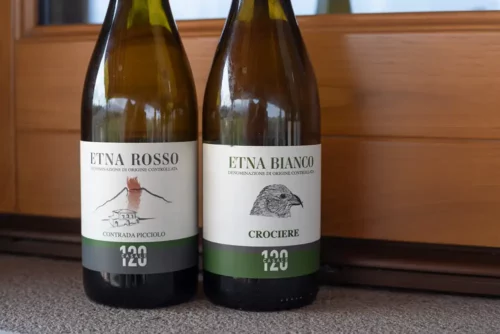
It is a scenario I am getting sick of: Boy joins press trip. Boy has American audience. Boy is introduced to an incredible wine that is not available in the United States. Boy cannot write about said wine, or publish photos from said wine’s vineyard.
Well, to hell with it. I’m tired of ignoring these wines.
This section is for American importers, who can now officially look at me as a talent scout. I was in Etna and I encountered three wineries that you need to investigate.
Of course, if you’re traveling to Etna then these three wineries might be one’s to seek out.
2020 Casale 120 Contrada Picciolo Etna Rosso
While visiting and tasting at Tenute delle Terre Nere, I also met Maurizio Lunetta and his wife Margriet Van Der Woerd from Casale 120, a tiny boutique winery on the north slope of Etna. The 2020 Contrada Picciolo is their first vintage. However, as small and nascent as this operation is, Lunetta is the Director of the Etna DOC consortium, a position often reserved for producers with an international reputation whose coattails the appellation can ride upon (for instance, his predecessor was Antonio Benanti). But Lunetta’s independent work as an agronomist and consultant with many of the estates as well as the DOC made him an appealing candidate.
And it turns out, he is a hell of a winemaker. That first vintage of Contrada Picciolo (★★★★ 3/4) was at once refreshing yet sturdy, suggestive of alpine origins with its lightness, grace and where the complexity resided (i.e. texture over aromas). The wine is comprised of 80% Nerello Mascalese and 20% Nerello Cappuccio, from vines ranging in age from 80 to 120 years old. One might expect more concentration and potency with such age, but Lunetta and Van Der Woerd clearly want the volcano’s minerality to shine … and shine it does.
The estate’s Etna Bianco is a top wine as well. Let’s hope this estate finds a way to export some of its lovely wines.
2019 Tenute Tozzi “I Turrizzi” Etna Rosso
Originally from Emilia-Romagna where she manages her family’s Casola Valsenio estate, Tenute Tozzi’s Virginia Lo Rizzo told me she has been up-and-running on Mount Etna for four years. Her story is an interesting microcosm of the volcano’s wine scene, with winemakers from all over Italy (and the world) setting up shop and finding fairly quick success with their wines.
“I Turrizi” calls out the pyramid of black rocks at the heart of her 60- to 90-year-old Nerello Mascalese vineyards, of which she has 18 hectares total. Perhaps its Lo Rizzo’s experience with Pinot Nero in Romagna, but there was certainly shades of Burgundian character to her Etna Rosso (★★★★★). I was reminded of herbal tea with some of its aromas — “spice and orange cardamom wildness” was my stream of consciousness note — backed by a mellow, elegant approach and superb length on the finish. While these wines are not yet in the United States, it seems to be only a matter of time.
2013 Feudo Cavaliere “Millemetri” Etna Rosso
The crescent-shaped appellation of Etna DOC is riddled with time-warp landscapes, but perhaps none was more indelible for me than a visit to Feudo Cavaliere on the southern slope of Mount Etna. Here, fourth-generation winemaker Margarita Platania d’Antoni cares for vines that range up to 300 years old (!), although a majority of the wine comes from much younger. The estate is also a former Benedictine monastery and the dry-stone terraces on site were built by the monks in the 15th century.
The estate is currently “between importers” for the American market, which was a huge disappointment to learn, as the wines I tasted were beguiling. d’Antoni holds her wines back before release, a significant financial commitment that rewards her customers with more immediate drinking, as well as a firm understanding of Nerello Mascalese’s age-worthy properties. Her current release is the 2013 “Millemetri” Etna Rosso (★★★★★), which had one of the most evocative sets of aromas, recalling cherry-mint-orange peel, but also light smoke and sweet spice with a specific “rainstorm” minerality (I’ll spare you the poetry in my notes, but clearly this wine carried me away).
The citrus aspects of the wine reminded of Nerello Mascalese’s kinship with Sangiovese, which is believed to be an ancestor grape. That was further reinforced when we tasted the 2012 of the same wine next, which was far more leathery and savory than the 2013. “Like an old Chianti Classico borne from the volcano” I wrote.
Again, let’s hope she finds a suitable importer to the States.
Wine Images
Cannot be republished or downloaded without permission. All photos ©Kevin Day/Opening a Bottle
Featured image: Nerello Mascalese at Donnafugata’s Fragole vineyard
Story images:
- Men working inside the Benedictine monastery-turned-winery Feudo Cavaliere
- Winemakers Giulia Monteleone (Monteleone), Sophia Ponzini (Tenute Bosco), Federico Graziani (Federgraziani) and Benedetto Alessandro (Monteleone and Tenuta di Fessina);
- Desaturated image of ripening Nerello Mascalese
- Nerello Mascalese at Feudo Cavaliere with the summit of Etna in the distance
- Winemaker Mario Paoluzi of I Custodi delle Vigne dell’Etna
- Bridesmaid on the streets of Catania
- An historic palmento winemaking facility at Firriato
- Chiesa di San Francesco Borgia in Catania
- Vineyards on the north slope of Etna
Note: My travel costs were largely covered by the Etna DOC consorzio as part of a press trip. Learn more about our editorial policy.

